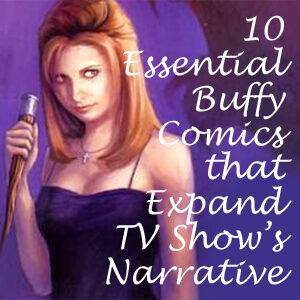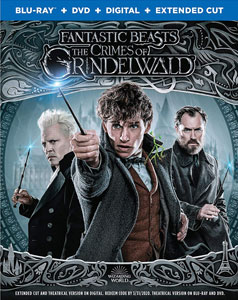J.K. Rowling’s first movie script, 2016’s “Fantastic Beasts and Where to Find Them,” leans heavily on the introduction of lovable characters – and more than its fair share of creatures, of course. It includes a side plot about a troubled boy, Credence (Ezra Miller), but that’s the most forgettable part; it’s there because the film can’t only be a fun encyclopedia. The second of this five-part “Harry Potter” prequel saga, “Fantastic Beasts: The Crimes of Grindelwald,” course-corrects and emphasizes the story – for better or worse.
“FB2” has a lot of momentum coming off the first one: Eddie Redmayne is still delightful as the animal-loving Aspie Newt Scamander, beautiful Queenie (Alison Sudol) and schlubby Jacob (Dan Fogler) deliver more unconventional-romance humor, Jude Law captures the affectations of Dumbledore, and Johnny Depp has intriguing presence as the titular villain. Unlike his successor in Wizarding World evil, Harry Potter’s hate-filled nemesis Voldemort, Grindelwald is calmly persuasive as he builds up a following.
It’s thin on some important beats, though. The love quadrangle could’ve been the juiciest part, but Rowling and director David Yates (helming his sixth Wizarding World entry) don’t wring enough emotion out of it. In flashbacks, Newt (Joshua Shea as a teen) and Leta Lestrange (Thea Lamb, giving way to Zoe Kravitz in a perfect instance of matching younger and older actresses) are an item at Hogwarts. Leta carves L+N in her desk, showing her devotion. An outcast herself, she is drawn to Newt’s kindness toward “monsters.”
Granted, Newt doesn’t make a lot of eye contact, but there are still ways to show his mutual feelings, and I think “FB2” is missing a scene like that. As great as it is to visit Hogwarts, I sense the filmmakers are scared to spend too much time there, lest the “Beasts” films be compared side-by-side with “Harry Potter” – which could make the prequels seem less original and/or inferior by direct comparison.
In the film’s present day, in 1927 Paris, Leta is engaged to Newt’s brother Theseus (Callum Turner). As we know, Newt also has feelings for Tina (Katherine Waterston). They have a cute moment in a mailroom that’s like the Jedi Archives from “Attack of the Clones” on magic steroids. Newt’s romantic arc never achieves the “Who will he choose?” tension it should, because we only see scenes of him smitten with Tina. I’m not 100 percent sure he’s hung up on Leta to the point where it would get in the way.
Newt’s obsession with beasts, which he still lugs around in his magic suitcase, might be the bigger hurdle. The star of the first film is the niffler, a furry platypus that steals shiny things in its pouch. Reminding us that “Fantastic Beasts” has its roots as Rowling’s in-universe encyclopedia of Wizarding World fauna, the sequel showcases a large Chinese tiger-dragon that – as usual – can only be tamed by Newt. It’s another triumph of the creature design shop. Admittedly though, “FB2’s” star beast is again the niffler – a baby, this time. That’s almost cheating.

The film’s equal interest in people and beasts is starkly illustrated by Nagini (Claudia Kim). She’s a beautiful freak-show performer who befriends Credence and can turn into a snake. But the more she transforms, the harder it is to change back. Nagini is more metaphorical than specific at this point – beyond seeing that her boss at the circus is a jerk, we don’t know a lot about why she is troubled; she’d fall into the “mutant struggling with her powers” trope and join Magneto if she were an “X-Men” character. That said, the purple-lipsticked Kim is striking, and I am interested to see how Nagini’s story hooks up with the “Potter” portion of the saga.
Newt’s love of both animals and Tina comes together when he compares her eyes to those of a salamander. She knows the empathetic weirdo well enough to understand it’s a compliment, and “FB2” comes alive in this moment. But then it gives way to spectacle: Towering stacks of mailboxes move around based on what Tina and Newt are searching for. But if you seek mail that doesn’t belong to you, beware: the room is guarded by panthers that multiply if you attack them. It’s one of the film’s best set pieces, and the sequence is entertaining. It also illustrates “FB2’s” struggles to give us characters and action simultaneously, rather than halting one to start up another.
The grand finale, though, saves what is an uneven film up to that point. Grindelwald has a power that’s almost like Kilgrave’s from “Jessica Jones.” He can’t control people’s actions (at least not in a large group), but he has an unnaturally strong influence on their feelings. In the first film, we see Grindelwald manipulate Credence the old-fashioned way, by promising a better life to a mopey kid with a horrific foster mom. Now Grindelwald can give a rousing speech to an auditorium full of magic-users and they’ll join him in heating up a magic-versus-Muggles conflict that doesn’t fully exist until he makes it so.
Many will say this is a real-world commentary, and indeed it is … in the same sense that the “Star Wars” prequels comment on the USA’s increased imperialism of the Aughts. The real world often mirrors mythological storytelling, and just as George Lucas plotted out the prequels before 9/11, Rowling certainly had the “Beasts” saga mapped out before the 2016 American presidential election. Heck, she probably had the bare bones in place when writing “Sorcerer’s Stone.”
That’s not to say the 1920s (in this story or in the real world) are/were free of mistrust between classes. But generally, the “Fantastic Beasts” films illustrate that the two groups live in peace, and most of the discrimination comes from the wizarding community. With notable exceptions such as witch persecutions, Muggle society doesn’t interact with magic users or even recognize if someone is a magic user.
The bigotry theme is most personified by Queenie, who believes society will not let her marry Jacob. Queenie is confused: Muggle society would not know it’s an interclass marriage. They’d just think it’s interesting that a hottie is madly in love with an Average Joe. It’s wizarding society that would look down on her.
(SPOILERS FOLLOW.)
And that makes Queenie’s climactic decision a bit troublesome. Still, Queenie’s confusion is palpable and genuine, and when she joins Grindelwald in the big “pick a side” finale in the auditorium, it raises the stakes of the “Fantastic Beasts” saga’s grand game. Newt, Tina, Queenie and Jacob are a family – literally in the case of the two sisters – and it’s tragic to think they are not only broken up, but in one case enemies.
The Wizarding World saga generally avoids overblown CGI finales, and the showdown after Grindelwald’s speech is a case in point. The sequence looks great, but the spectacle has meaning, and the rules are smoothly communicated. Grindelwald puts up a protective wall of blue flame. The good guys’ orange-flame spells can’t penetrate it, and if you try to attack Grindelwald by walking through the flame, you burn up. But if you walk through with pure intent to join him, you’re golden.
That’s the film’s centerpiece, but its biggest talking point comes in the coda: Grindelwald informs Credence that he, Credence, is related to Dumbledore. In terms of big reveals, “The Empire Strikes Back” this ain’t, because it infuses no meaning into what we’ve seen so far. Unless I missed something, neither of these long-lost brothers know who the other is, let alone have much reason to be enemies.
So it’s a set up for the third film. The first movie was all set-up, and that surprised no one and didn’t bother die-hard fans. And with Dumbledore and Hogwarts and a likable leading quartet, it’s hard to muster up a lot of ill will toward “The Crimes of Grindelwald.” But I can see how it might fail to hook a newcomer. The meat of the story and probably the best “Fantastic Beasts” films are still to come.

